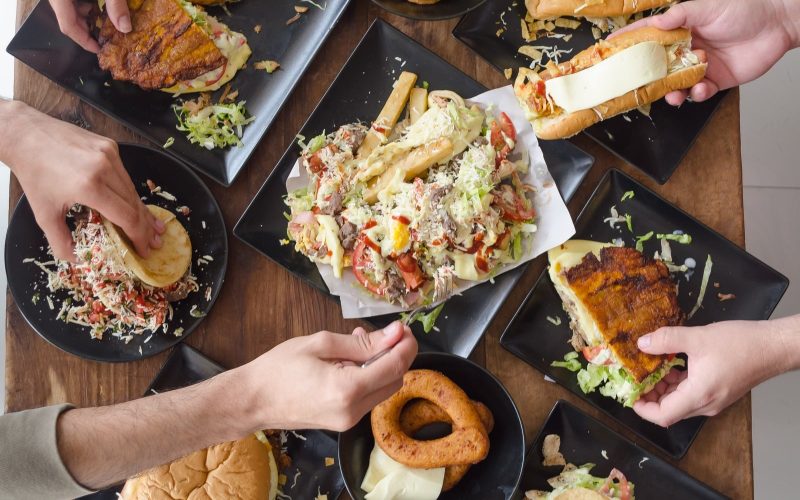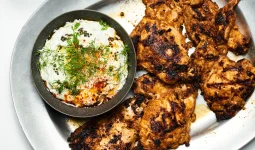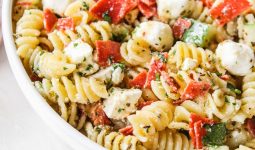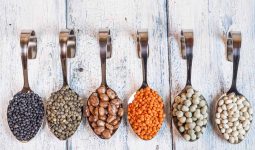Venezuela is known for its beautiful countryside and diverse traditional food, which incorporates influences from Spanish, West African, and Native American cultures.
Most meals are made with simple components such as corn, plantains, black beans, and meats, giving Venezuelan cuisine a distinct and delicious flavor.
Even if politics and the country’s current condition have recently dominated the news, one thing will always be celebrated: the cuisine.
Venezuela’s diverse cuisine gives travelers the ideal balance of taste and simplicity. The indigenous cuisine has widened due to African and European influences while maintaining its distinct individuality.
Corn has been harvested in Venezuela for millennia and plays a significant role in the country’s cuisine. Corn flour is used in various meals; you can add various ingredients and spices. The result is a cuisine that is both diverse and well-known.
As a result, travelers come home inspired by the local cuisine and how simple it is to duplicate some of the best Venezuelan dishes in their kitchen.
Here is a handy guide to some of the Traditional Venezuelan food.
1. Arepas

“There’s nothing more than Venezuelan than an arepa,” as the classic adage goes. This corn-based “bread” is also the quintessential Venezuelan cuisine, which can be served as a main course or a side dish.
Arepas are flat and circular unleavened corn flour patties that can be grilled, baked, or fried. Depending on the location and how the cooks approach them, you can fill them with various items.
Furthermore, it’s incredibly adaptable because you may customize the dough to your liking. Some individuals like to add shredded carrots or beets to enhance the taste. You can also add chia seeds, oats, and flax seeds to make them healthier.
Scrambled eggs, black beans with cheddar, seasoned ground beef, or avocado are popular.
Also, Reina Pepiada, one of the most well-known arepas, is stuffed with avocado and mayonnaise. It’s fantastic, so try it out. It is also a good traditional Venezuelan food.
2. Pabellon Criollo
This is the national dish of Venezuela. Juicy pulled beef, black beans, white rice, and fried plantains make up the criollo pabellón.
It’s usually served with a slice of avocado on the side, and some shredded salty white cheddar grated over the black beans.
It’s a flavor match made in heaven. However, the salty flavor of the beef and beans contrasts beautifully with the sweet flavor of the plantains and white rice, creating a taste sensation.
Furthermore, there are various variations on this platter, but some claim that the sofrito of the beef is the key to any superb pabellon.
The secret to the beef’s incredible flavor is the combination of onions, sweet peppers, bell peppers, and adobo seasoning in which it is cooked.
Moreover, Pabellón criollo is a dish that combines the three major civilizations of Venezuela: European (rice), Indigenous (beef), and African (drinks) (black beans). On the other hand, this message is entirely poetic and based on the hue of the products.
3. Tequenos (Venezuelan Cheese Sticks)
Tequenos are the ideal flexible Venezuelan meal. They are simple and everywhere. Their importance in Venezuelan cuisine is such that they are not just a popular appetizer in restaurants but also a must-have at any social gathering.
Tequenos is from Los Teques, a popular vacation destination for the wealthy. First, they fashioned the Venezuelan dish from leftover pastries, but it rapidly grew into something bigger.
Furthermore, although Tequenos and mozzarella sticks have certain similarities, we think you’ll enjoy these much more.
The shell is wrapped around white cheese with a salty flavor, using a simple pastry crust. Also, The Tequenos are then fried or baked before being served with various dipping sauces.
4. Pan De Jamon (Ham Bread)
Despite being a traditional Venezuelan food, Pan de Jamon can be difficult to find. The dish, which translates to “ham bread,” is usually offered solely at Christmas dinner.
If you visit Venezuela during Christmas, you’ll find all the necessary ingredients at local markets and families preparing for the evening meal.
The origins of Pan de Jamon may be traced back to Caracas and the numerous cultures that make up the capital city. The meal evolved for many years until it finally became authentic Venezuelan cuisine.
However, Pan de Jamon can assist you if you want to spice your Christmas feasts. The bread is sweet and toasty, making it ideal for winter.
To make it, make a dough with sugar sprinkled on top. Also, after laying it flat, top it with ham slices, raisins, and olives.
However, before baking it in the oven, roll it up. For your next Christmas feast, make it with this delectable recipe.
5. Hallaca
Hallacas are formed of maize dough wrapped with plantain, stuffed with “guiso” (beef, olives, pork, capers, and various vegetables), and then cooked in boiling water.
This is an excellent example of the cultural mingling resulting from Venezuela’s colonization. The plantain is from Africa, the corn dough is from indigenous people, and the guiso is from Spain.
Traditionally, hallacas are served with Christmas dinner. It’s frequently served with a dollop of butter on top and a slice of ham bread.
Because manufacturing hallacas is time-consuming, it is customary for the family to gather and spend a day producing them.
However, each family has its secret ingredient for hallacas or traditions passed down through the generations, and techniques have also been refined.
6. Cachaca
Cachaca is a pancake-like cake with fresh corn batter and corn kernel bits. It’s commonly served with a stuffing of queso de mano (hand-made cheese) and a dollop of cream or butter. It has a sweet flavor complements the saltiness of the stuffings used wonderfully.
In roadside eateries or formal restaurants, it is commonly served with ham, hog, beef, or chicharron.
Cachapas are indigenous to Venezuela’s Central Region, where the indigenous people who once inhabited these regions grew corn. This is one of the best traditional Venezuelan foods you should try.
7. Pericho
Another breakfast favorite is Perico, which consists of scrambled eggs with Latin American seasoning. It’s a mixture of fresh eggs, onion, tomatoes, and red peppers commonly used to stuff arepas. However, many prefer to eat it independently because of its flavor.
The best part is that it’s also healthy. It provides the protein, fat, vitamins, and minerals your body needs to energize itself in the morning.
Grate the tomatoes, onions, and red peppers and heat them together for a few minutes before adding the eggs to get the most flavor.
8. Dulce De Leche
Now that we’ve covered some classic foods, let’s look at one of Venezuela’s best desserts. Dulce de leche isn’t widely available outside Latin America, but its sweet, caramel-like texture can elevate even the most mundane dessert.
Furthermore, the Venezuelan dish is simple to prepare and will add diversity to your homemade desserts. To make condensed milk, simply heat it until it thickens and turns brown.
It effectively transforms into a caramel sauce that a spoonful of sweet tooths can eat. However, most people prefer to spread it over another dessert or bread.
Locals will stuff dulce de leche inside a Pionono or add it to their waffles. This is one of the most fascinating traditional Venezuelan foods, so try it out. It’s like Nutella.
9. Tres Leche
In this delectable delicacy, a sponge cake is soaked in three types of milk (condensed milk, evaporated milk, and ordinary milk) and topped with a meringue topping.
The dough is light, and air bubbles develop when cooked because no butter is used. This is why the cake does not get soggy after being soaked in the milk mixture.
Some people, however, like to add their personal touch to the cake by sprinkling dulce de leche and cinnamon, which adds even more sweetness and is incredibly delicious.
10. Bollo Pelon
Bollo Pelon, one of the famous traditional Venezuelan foods you won’t find in local eateries, delivers a delightful flavor explosion. Something that will only encourage you to prepare some in the hostel kitchen or at home.
Bollo Pelon is similar to other traditional Venezuelan cuisines containing corn flour. However, with the addition of a hearty beef stew, the flour is rolled into a fist-sized ball.
The ball is perfectly cooked before being covered in cheese and topped with a tangy tomato sauce.
Furthermore, it’s a favorite family supper, liked by both young and elderly people, because of the variety of flavors and balance of the dough and stew.
Because the dish is hefty and filling, you’ll only need two or three for a complete supper. You can easily replace the beef stew with chicken or pork.
11. Empanadas
These are filled patties that can be fried or baked and are produced from the same corn flour as arepas. Many different fillings can be used in empanadas, but white cheese is the most frequent. The sweetness of the bread well balances the saltiness of the cheese.
The filling varies by area; some individuals use the same fillings as arepas. Furthermore, Ground beef is a popular stuffing.
Cazón (small shark), black beans, and even plantain are all options for shredded beef or chicken. No matter what’s in them. You’ll enjoy them.
Empanadas are delicious as an appetizer or as a main course. They are the typical breakfast served in the cafeteria of a Venezuelan school.
12. Patacon Zuliano
Patacones are a traditional Venezuelan dish. They’re made of unripe plantain slices cooked twice for flavor and texture, similar to the famous tostones.
The plantains are removed after the first, dried, and flattened before being fried until golden brown.
It’s Venezuelan street food at its finest. On the other hand, Zulia has pushed things to a new level. Traditional fried plantains are transformed into Patacon Zuliano, a delectable shredded beef burger.
The burger is stuffed with beef (or chicken) and salad, cheese, boiled eggs, or veggies, with the fried plantain slices serving as bookends before being slathered in ketchup and mayonnaise.
It’s hardly the healthiest option but is the greasy supper you’ve sought. For lunch, try cooking your own.
13. Fosforera
Although it appears simple on paper, creating the perfect Fosforera necessitates time and effort. This is due to the various ingredients, including shellfish to veggies.
It’s a filling and nutritious meal. So much so that it gained the moniker levanta muertos, which translates to “resurrecting the dead.”
Fish head, crab, clam, squid, and shrimp are common ingredients in the soup, and it’s not uncommon to encounter a mix.
Green peppers, tomatoes, and onions are among the veggies that accompany the fish. Before being cooked for 45 minutes, it’s combined with some zesty spices and even a touch of white wine. This is one of the most famous traditional Venezuelan food.
14. Mandocas
Mandocas, like fried plantain, may be found all around Venezuela. Kids will eat them in the morning or carry them in their backpacks for a pleasant snack at school, and they are also a popular street food item in the country.
Mandocas are native to the western part of the country, Zulia. But, because of the fried goodness of the horseshoe-shaped donut, they immediately became popular.
Corn dough is packed with a variety of local ingredients to make Mandocas. The most frequent ingredients are mashed ripe plantains, anise seeds, and cheese combined with raw cane sugar.
15. Paledonias
Flour, syrup, cinnamon, and unrefined cane sugar make up Paledonias. The sugar is responsible for the recognizable brown color and soft but crispy exterior. On the other hand, the inside is more analogous to a sponge cake.
Paledonias are a delicious dessert, but they’re more usually eaten as a snack or for breakfast, where the locals serve them with coffee and milk.
You should do this at least once on your travels. It is, without a doubt, one of the best traditional Venezuelan foods.








